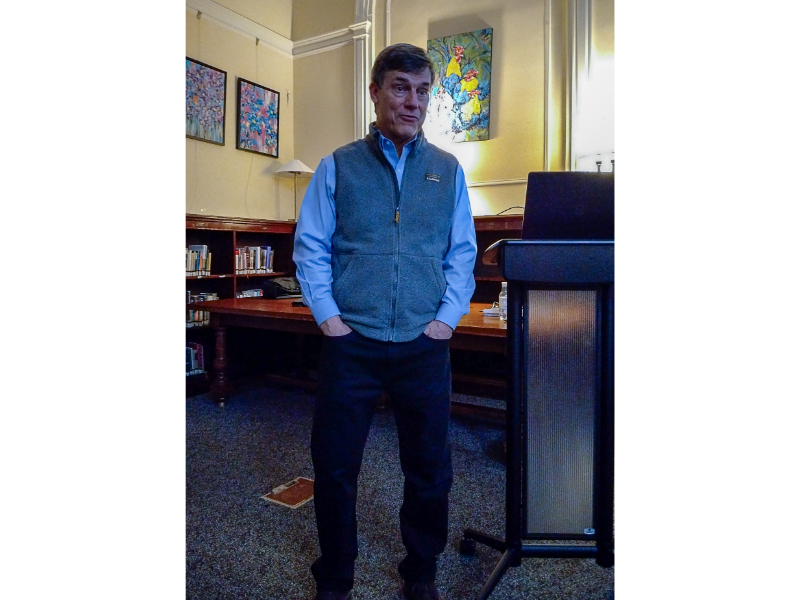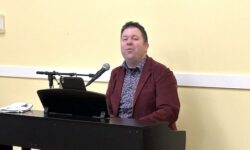By Audrey Anderson
Hometown Weekly Reporter
A crowd of seventy-five eager attendees packed into Medfield library’s classic Dailey Room to hear Eric B. Schultz discuss “King Philip's War: The History and Legacy of America's Forgotten Conflict.” He wrote the book together with local author Michael J. Tougias, and it was published in 2017.
Interested in history since his early years, Schultz is a Director of the Old Colony History Museum in Taunton, Massachusetts, and Director Emeritus and former Chairman of both the Gettysburg Foundation and the New England Historic Genealogical Society/American Ancestors. He was raised in southeastern Massachusetts, near many of the sites of King Phillip’s War. Schulz tried to find as many war sites as possible, and he photographed and researched local monuments and memorials to include in the book, which he calls a “travelogue” of the war.
According to Schultz, King Phillip’s father, Massasoit, was the grand sachem of the Wampanoag confederacy. He “held the peace” with Plymouth Colony. After Massasoit died in 1661, his son Wamsutta became sachem. He and his brother Metacom were given English names by Plymouth Colony: Wamsutta was named “Alexander,” and Metacom was named “Phillip.” Wamsutta was seen by the English as an “obstacle to the acquisition of land,” and he was kidnapped by Edward Winslow’s son and died shortly thereafter.
Metacom became sachem after Wamsutta’s death. In January of 1675, after the ambush and killing of Massachusett man John Sassamon, Metacom became “convinced that he would never get justice from the English.” King Phillip’s War began in Swansea, Massachusetts, in 1675.
As the war began, the Native American population had been decimated by an unknown disease, in an era characterized as the “Great Dying.” The death rate was between 75% and 95%. Schultz said that “whole villages could be decimated within two weeks.”
In the war, twenty-thousand Native Americans warriors fought against 50,000 English soldiers, whose numbers were bolstered by eleven ships that arrived from England in the 1630 “Great Migration.” After beginning in Swansea, the war spread to Taunton, Middleboro, and Mendon. The Nipmuc attacked Mendon in the summer of 1675. The Siege of Brookfield and the Lancaster Attack followed. In the Connecticut River Valley, the Native Americans’ Bloody Brook Ambush killed 21 English. The war then travelled through Northfield to the Great Swamp in Kingston, RI, where, in the winter of 1675-76, 400 women and children were killed by the English. Metacom was killed at Mt. Hope in Rhode Island. Schultz showed photos of many monuments and memorials that still exist in many of these towns, some on public land and some that are now on private property.
Two- to three-hundred Native Americans travelled from Lancaster to Medfield. Thirty-two Medfield homes were burned, which was half of the town, and twenty Medfield English died. Many in Medfield fled to six garrisons in the area: Five were in Medfield--Peak House, Samuel Morse House, Issac Cheney House, a building on the corner of Main Street and Brook Street, one on Harding Street, and one on Dale Street. Another garrison was in the current Town of Millis at the Boggestowe Stone House.
A monument to King Phillip’s War will be dedicated in Medfield this summer. More information will follow.









